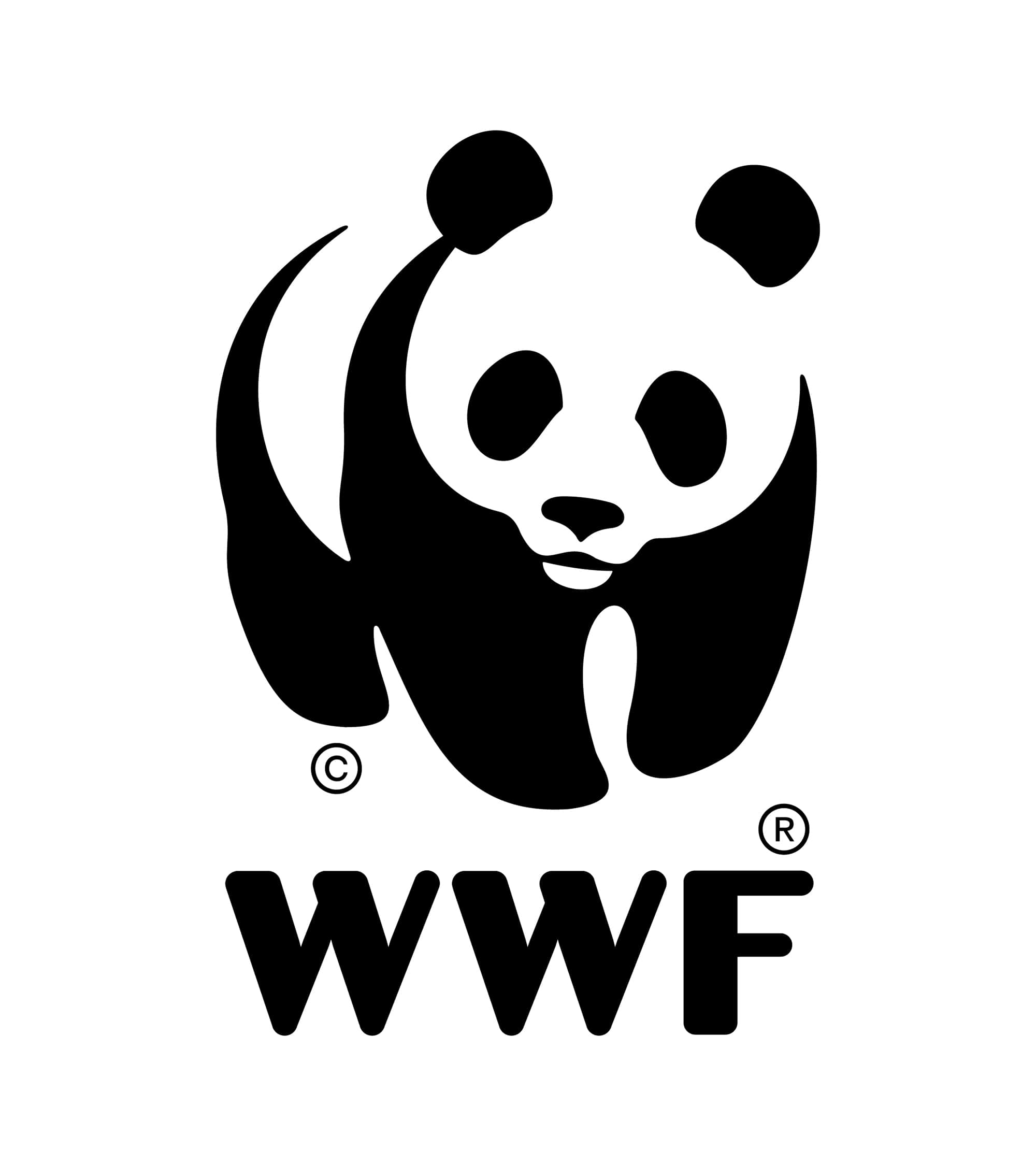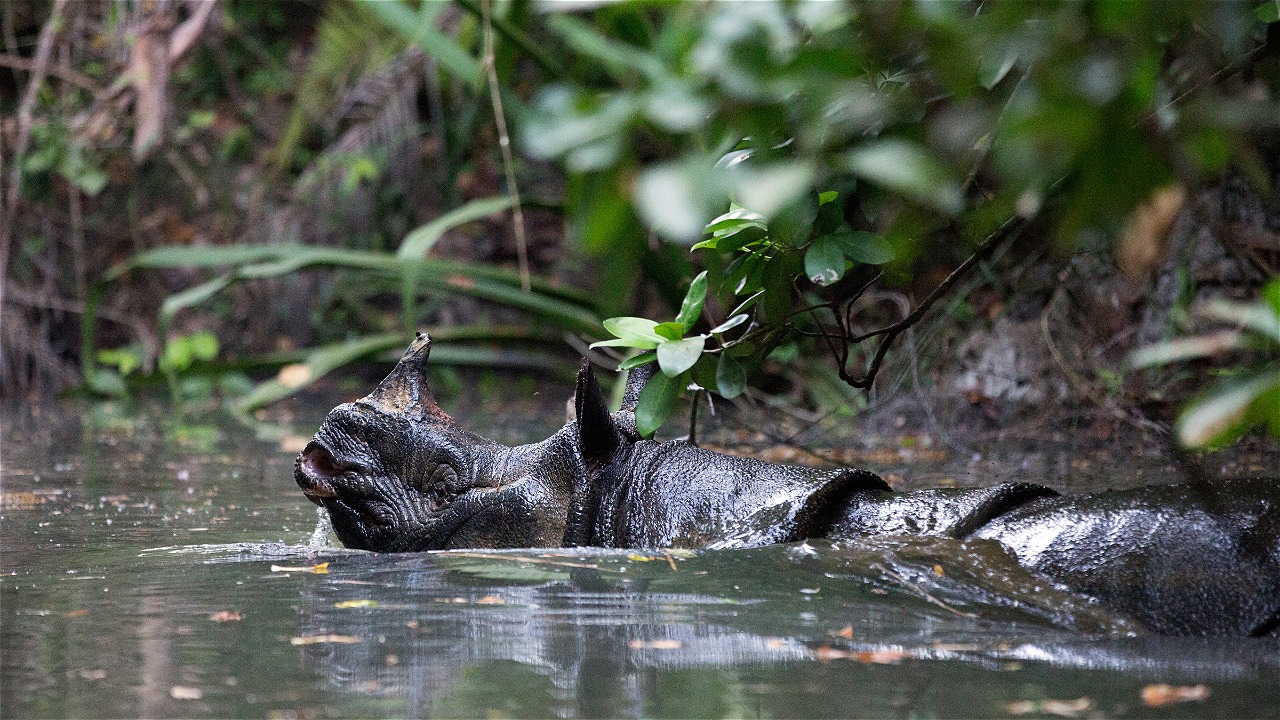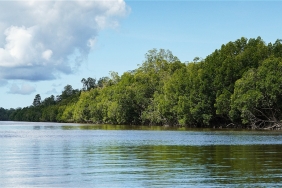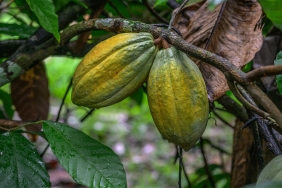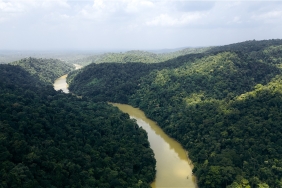INADEQUATE PROTECTION CAUSES JAVAN RHINO EXTINCTION IN VIETNAM
WWF and the International Rhino Foundation (IRF) have confirmed the extinction of the Javan rhinoceros (Rhinoceros sondaicus annamiticus) in Vietnam.
Genetic analysis of 22 dung samples collected by a Cat Tien National Park - WWF survey team from 2009 – 2010 affirm that the samples all belonged to a rhinoceros that was found dead in the park in April 2010, shortly after the survey was completed. The findings, presented in a new WWF report, also point to poaching as the likely cause of the death, as the rhino was found with a bullet in its leg and had its horn removed.
The tragic discovery comes after a 2004 survey conducted by Queen’s University, Canada, that found at least two rhinos living in the park at the time.
“The last Javan rhino in Vietnam has gone,” said Tran Thi Minh Hien, WWF-Vietnam Country Director. “It is painful that despite significant investment in the Vietnamese rhino population conservation efforts failed to save this unique animal. Vietnam has lost part of its natural heritage.”
The rhinoceros was believed to be extinct from mainland Asia until 1988 when an individual was hunted from the Cat Tien area, leading to the discovery of a small population. From the mid-1990s, a number of organizations were involved in efforts to conserve the remaining Javan rhino population in Cat Tien National Park, but the report highlights that ineffective protection by the park was ultimately the cause of the extinction. This is a common problem in most protected areas in Vietnam that threatens the survival of many other species, says WWF.
Illegal hunting to supply the wildlife trade has reduced many species in Vietnam to small and isolated populations. The tiger, Asian elephant and endemic species like the saola, Tonkin snub-nosed monkey and Siamese crocodile are on the verge of extinction in the country.
“The tragedy of the Vietnamese Javan rhinoceros is a sad symbol of this extinction crisis,” said Nick Cox, Manager of WWF’s Species Programme in the Greater Mekong. “The single most important action to conserve Vietnam’s endangered species is protecting their natural habitat and deterring poaching and illegal wildlife trade – the report shows that these actions were inadequate to save the Javan rhino in Vietnam and this continued situation will no doubt lead to the extinction of many more species from Vietnam. Vietnam’s protected areas need more rangers, better training and monitoring, and more accountability.”
WWF recognises that habitat loss played a key role in sealing the fate of the rhino in Vietnam and warns that inadequate law enforcement and ineffective management of protected areas, encroachment and infrastructure development occurring within and close to Vietnam’s protected areas will only exert additional pressures on already fragile populations of species.
“Reintroduction of the rhinoceros to Vietnam is not economically or practically feasible. It is gone from Vietnam forever,” said Christy Williams, WWF’s Asian Elephant and Rhino Programme Coordinator.
The Javan rhinoceros is now believed to be confined to one population, less than 50 individuals, in a small national park in Indonesia. The species is critically endangered and with demand for rhino horn for the Asian traditional medicine trade increasing every year, protection and expansion of the Indonesian population is the highest priority.
“Javan rhino extinction in Vietnam reduced one possible option for species preservation: cross breeding. Cross breeding will enrich Javan rhino gene pool, making it less vurnerable, “ explained Adhi Hariadi, WWF-Indonesia’s Ujung Kulon Program Project Leader. With the extinction, the only hope for the species lies in the Ujung Kulon’s population hence more effective and innovative conservation programs are required. One possibilities is creating a second habitat outside of Ujung Kulon.
“The creation of second population outside of Ujung Kulon needs to be done so that we have a “back up” population to reduce the risk of Javan rhino extinction caused by natural disaster or disease outbreak,” explained Hariadi.
Similar priority on Ujung Kulon population is shared by the IRF. “This makes our work in Indonesia even more critical. We must ensure that what happened to the Javan rhinoceros in Vietnam is not repeated in Indonesia a few years down the line,” said Susie Ellis of the International Rhino Foundation.
Contacts:
- Adhi Hariadi, Project Leader Ujung Kulon, WWF-Indonesia, ahariadi@wwf.or.id
- Nguyen Phuong Ngan, Communications Officer WWF-Vietnam, ngan.nguyenphuong@wwfgreatermekong.org
- Chris Chaplin, Media Officer, Asia Pacific WWF International, cchaplin@wwf.sg
Note to the editors:
The report Extinction of the Javan Rhinoceros (Rhinoceros sondaicus) from Vietnam can be downloaded at http://www.mediafire.com/?e8i343a7l33yqex
A short film about the extinction of the Javan rhino in Vietnam can also be downloaded at: http://gvn.panda.org/pages/view.php?ref=3233&k=25b190f724 and photos can be downloaded at: http://www.mediafire.com/?tz55f0m8nfcyfk7 (please credit ©WWF-Greater Mekong for photos)
Three different subspecies of Javan rhino are recognized. The most abundant subspecies (R. sondaicus sondaicus) lives only in Ujung Kulon National Park, Java, Indonesia, with approximately 50 individuals remaining. The subspecies once found in Bengal, Assam, and Myanmar (R. sondicus inermis) is now extinct. The third subspecies formerly occurred in Lao, Cambodia, eastern Thailand and Vietnam. R. sondaicus annamiticus was rediscovered in Vietnam in 1988 and is now extinct in Vietnam when the last one was found dead in April 2010 in Cat Tien National Park.
About WWF
WWF is one of the world's largest and most respected independent conservation organizations, with over 5 million supporters and a global network active in over 100 countries. WWF's mission is to stop the degradation of the earth's natural environment and to build a future in which humans live in harmony with nature, by conserving the world's biological diversity, ensuring that the use of renewable natural resources is sustainable, and promoting the reduction of pollution and wasteful consumption. www.wwf.or.id for latest news and media resources
About the International Rhino Foundation
The International Rhino Foundation is a global not-for-profit organization dedicated to the survival of the world’s rhino species through conservation and research, and increasing awareness about the plight of the rhino. IRF funds and operates rhino conservation programs in Africa and Asia. To learn more about the IRF, visit www.rhinos-irf.org
